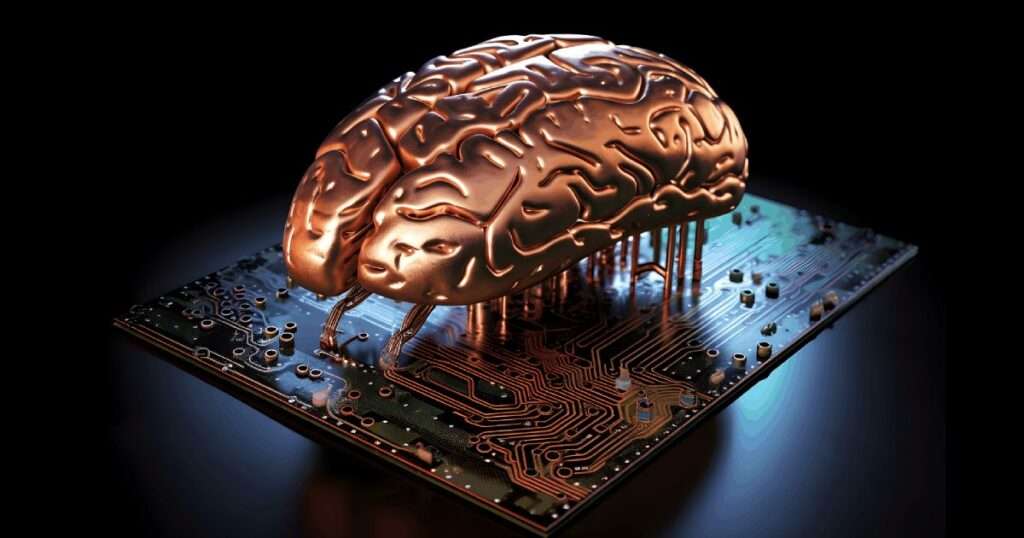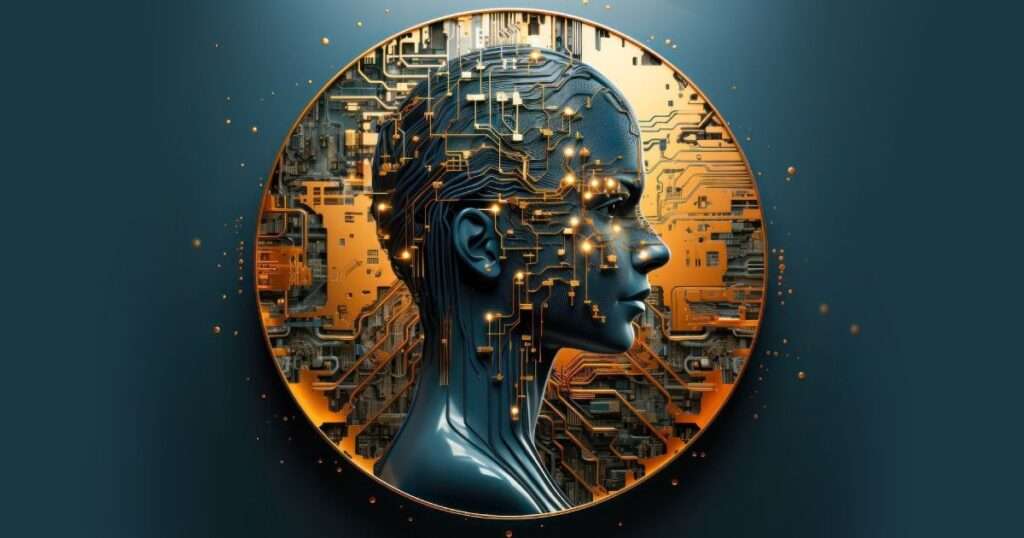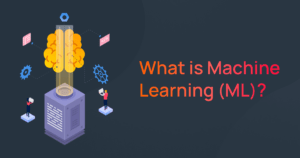Machine Learning Definition and Examples
Machine learning is a subset of artificial intelligence (AI) that involves training algorithms to recognize patterns within data and make predictions or decisions based on that recognition. According to Arthur Samuel’s original definition, machine learning enables computers to learn and adapt without being explicitly programmed, allowing them to process vast and complex data. Machine learning often operates with minimal human intervention, making it highly adaptive and autonomous.
Data patterns refer to recognizable and often recurring relationships or structures in the dataset, such as trends, clusters, or sequences, which the algorithm identifies to make predictions or decisions. Unlike traditional software that is explicitly programmed with fixed instructions, machine learning algorithms adjust and improve based on data-driven insights. In this article, we explain what machine learning is and how different learning techniques work.
The growing importance and impact of AI and machine learning are evident in organizations and society, as these technologies unlock new value and drive innovation. Machine learning has grown in popularity due to its ability to improve efficiency and accuracy in a wide range of industries, from healthcare to finance to transportation. Different approaches and techniques can be used, each with its strengths and limitations.
Why is Machine Learning Important?
Machine learning has become essential across various industries by automating complex tasks and enabling large-scale data analysis and data annotation. This technology not only enhances efficiency and reduces workloads but also saves time, freeing employees to focus on higher-value activities. Machine learning applications leverage big data to drive insights and value across industries, enabling organizations to make data-driven decisions and gain a competitive edge.
Recognizing the foundational role of machine learning in AI, governments around the world have allocated budgets for research into machine learning algorithms and techniques. For example, notable initiatives include the ML Laboratory at the University of Texas in the USA and a machine learning lab funded by the Indian Government at the Indian Institute of Science in Bangalore.
Machine learning employs algorithms and statistical models to allow computers to perform data analysis and make decisions without human input, which significantly cuts costs and reduces resource consumption. Machine learning relies on statistical algorithms and complex mathematical calculations to process and interpret large datasets, enabling the identification of patterns and improved predictive AI accuracy. By leveraging AI customer service it leverages AI to personalize interactions, thereby enhancing customer loyalty and satisfaction.
The primary benefit for businesses is the optimization of operational costs and increased efficiency in handling repetitive tasks, which are the core goals of automation. Additionally, data mining is used in machine learning to extract actionable insights from vast amounts of data, supporting better decision-making and uncovering hidden patterns.

How Does Machine Learning Work? (Learning Models)
The basic idea of how machine learning works is building models that can find patterns in the data, and these machine learning models can be trained to make predictions or take actions based on new data inputs. At the heart of this process is the learning system, which serves as the core framework enabling machine learning models to intake data, undergo training, and improve their performance over time. Let’s delve deeper into the most common learning models.
Machine learning models can be further classified based on the type of data they use: structured or unstructured. Structured data is organized and has a predefined format, while unstructured data is not organized in a particular way and can be in the form of text, images, or videos. The training process for these models is crucial and typically involves several steps, including data acquisition and labeling, to ensure the quality and relevance of the information used for model development.
While both techniques have their uses, they are fundamentally different in their approach and outcome. In supervised learning, for example, the algorithm learns to map input features to output variables, allowing it to make accurate predictions. Machine learning systems are evaluated not only on their performance with training data but also on their ability to generalize and perform well on unseen data. Let’s explore these methodologies in greater detail to understand their distinct characteristics.
1. Supervised Learning
In supervised learning, supervised learning algorithms are trained on a labeled dataset where the input and output values are known. The goal is to predict the output given a new input, using the relationships learned from the labeled training data. The algorithm is provided with a set of features (input variables) and their corresponding labels (output values) and works to map these features to the correct output values to predict outcomes for new data.
Supervised machine learning can be further divided into two other types of ML tasks – regression and classification algorithms. Regression deals with predicting a continuous value by using historical data to forecast future values, such as house prices or temperatures. In these tasks, the model leverages past records to predict outcomes. Classification is used for predicting a discrete value (such as a binary classification problem that outputs either a “yes” or “no” answer).
2. Unsupervised Learning
Unsupervised learning, on the other hand, has no labeled output data. Instead, the algorithm is trained on a dataset with only input variables and no corresponding output values. The algorithm is tasked with discovering hidden patterns or structures in the data, without any external supervision. Unsupervised learning is commonly used in data mining methods to extract insights from large datasets.
Unsupervised machine learning can be used to group similar data points together or to reduce the dimensionality of high-dimensional datasets. Data mining is a key application of unsupervised learning for uncovering unknown patterns. Dimensionality reduction allows for easier visualization and analysis of complex datasets by compressing them to a lower-dimensional space.
Both unsupervised and supervised ML techniques have their own strengths and limitations, and the choice of which to use depends on the specific problem and the available data.
3. Semi-Supervised Learning
Semi-supervised learning is a type of machine learning that falls between supervised learning and unsupervised ML. In a semi-supervised machine learning learning model, the algorithm is trained on a dataset that contains both labeled and unlabeled data.
Generally, a small amount of data is labeled while a large amount of data is unlabeled. The idea is to use the labeled data to guide the learning process, and then use the unlabeled data to improve generalization and make the model more robust.
4. Reinforcement Learning
Reinforcement learning is a type of machine learning algorithm where AI agents learns to make decisions by interacting with an environment. Actions yield either rewards or penalties, and the goal is to maximize the cumulative reward over time.
Unlike supervised and unsupervised learning, it’s well-suited for situations requiring sequential decision-making with delayed outcomes. Common applications include robotics, game theory, and optimization problems. Like other machine learning paradigms, the choice to use reinforcement learning depends on the problem scope, data availability, and environmental conditions.
Genetic algorithms are another approach used in machine learning for optimization and adaptive problem-solving, sometimes in conjunction with reinforcement learning.
| Supervised Learning | Unsupervised Learning |
| Uses labeled data
Predicts output based on input Examples: Regression, Classification |
Uses unlabeled data
Discovers hidden patterns in data Examples: Clustering, Association Rule Learning |
Machine Learning Methods
Machine learning methods are the backbone of how machines learn from data and continuously improve their performance on specific tasks. These techniques empower a machine learning model to analyze vast amounts of information, uncover hidden patterns, and make accurate predictions or decisions.
The most widely used machine learning methods include classification, regression, clustering, dimensionality reduction, and anomaly detection. Each method serves a unique purpose, helping machines learn from data in different ways and solve a variety of real-world problems.
Classification
Classification is a fundamental machine learning method where the goal is to assign input data to one of several predefined categories or classes. For instance, a machine learning model might be trained to determine whether an image contains a cat or a dog based on its features.
Classification algorithms, such as support vector machines and random forests, excel at identifying patterns in data and making predictions about which class a new data point belongs to. This approach is widely used in applications like image recognition, sentiment analysis, and spam detection, where accurately classifying data is essential for delivering relevant results.
Regression
Regression is a machine learning method focused on predicting continuous values rather than discrete categories. For example, a machine learning model can estimate the price of a house based on features like square footage, location, and number of bedrooms.
Popular regression algorithms include linear regression and decision trees, and more complex deep learning models are also used for advanced regression tasks. Regression is commonly applied in forecasting, recommendation systems, and predictive maintenance, enabling organizations to make data-driven decisions and anticipate future trends.
Clustering
Clustering is an unsupervised machine learning method that groups similar data points together based on their characteristics, without relying on labeled data. A machine learning model might use clustering algorithms to segment customers by purchasing behavior or to organize images with similar visual features. Techniques like k-means and hierarchical clustering help machines identify patterns and naturally occurring groups within large datasets.
Clustering is essential for tasks such as customer segmentation, image segmentation, and gene expression analysis, allowing businesses and researchers to better understand and target their audiences.
Dimensionality Reduction
Dimensionality reduction is a machine learning method designed to simplify complex datasets by reducing the number of features or variables while retaining the most important information.
For example, a machine learning model might use dimensionality reduction to condense a dataset with hundreds of features down to a handful that capture the majority of the variance. Algorithms like principal component analysis (PCA) and singular value decomposition (SVD) are commonly used for this purpose. These machine learning algorithms, including deep learning techniques, make it easier to visualize data, select relevant features, and improve the efficiency of other learning algorithms.
Anomaly Detection
Anomaly detection is a machine learning method that focuses on identifying data points that deviate significantly from the norm. For example, a machine learning model can be trained to spot fraudulent transactions by detecting unusual patterns in financial data.
Anomaly detection algorithms, such as one-class SVM and local outlier factor, are widely used in fraud detection, network security, and quality control. Machine learning technology, including advanced machine learning systems and artificial neural networks, enables machines to detect patterns and flag anomalies in real-world data, helping organizations respond quickly to potential threats or errors.
Machine Learning vs. Deep Learning
In simple words, machine learning is a broad field of artificial intelligence focused on algorithms that learn from data. Deep learning uses neural networks with multiple layers to analyze various data types.
Neural networks are the architecture that makes deep learning possible, mimicking human brain functions. But let’s learn more about deep learning and artificial neural networks. An artificial neural network is a computing model inspired by the structure and functioning of biological neural networks, where interconnected artificial neurons process information in a way similar to how the human brain works. But let’s learn more about deep learning and artificial neural networks.
Deep Learning
Deep learning is a subset of machine learning that involves the use of neural networks with multiple layers. In these networks, the output layer is the final layer that produces the model’s predictions based on the features learned by the previous layers. Deep learning algorithms are designed to learn from large amounts of unstructured data, such as images, speech, and text. Deep learning has revolutionized computer vision, image and speech recognition, and natural language processing.
Neural Networks
Neural or artificial neural networks are a type of computing system that mimics the structure and function of the human brain. While they form the basis for technologies like neural search, the two are not synonymous and should not be confused.
They are composed of layers of interconnected nodes, each of which performs a specific task. Neural networks are often used in deep learning algorithms to enable machines to learn from complex data sets. Also, they are behind the scenes of technology powering any AI Search platform.
Overall, machine learning, deep learning, and neural networks are all powerful subfields of artificial intelligence that are changing the way we interact with technology and process data.
Machine Learning Examples
Machine learning has already found its way into various industries, from finance and healthcare to transportation and retail. There is a wide range of machine learning applications across these sectors, providing real-time insights, improving efficiency, and offering a competitive advantage. AI systems are at the core of these applications, powering solutions that address complex problems and drive innovation. Let’s explore some of the most significant use cases of ML in the real world.
1. Personalized Recommendations
One of the most common examples of machine learning in action is personalized product and content recommendations. By analyzing user data such as browsing history, purchase behavior, and demographics.
ML algorithms are very helpful for sales and e-commerce by predicting products or services that a user is likely to be interested in. This has become an essential part of e-commerce, streaming platforms, and social media.
2. Fraud Detection
Machine learning technology is also being used to prevent fraud in various industries, such as fraud detection by Generative AI in Banking, insurance, and e-commerce. Most of By analyzing transaction data and detecting patterns, machine learning algorithms can identify fraudulent transactions in real-time, preventing financial losses and protecting customers from identity theft.
3. Predictive Maintenance
Machine learning is transforming the way equipment maintenance is conducted in the manufacturing, transportation, and aviation industries. AIOps platforms utilize ML algorithms to perform ‘anomaly detection’ in systems. In simple terms, this means they automatically identify unusual patterns or behaviors within a system that could indicate issues like malfunctions or security breaches.
By analyzing sensor data and predicting when maintenance is likely to be needed, ML systems can help prevent costly equipment breakdowns, reduce downtime, and increase operational efficiency.
4. Virtual Assistants
Virtual assistants are powered by machine learning algorithms and generative AI that can understand natural language processing, recognize voice commands, and perform tasks such as setting reminders, playing music, or controlling smart devices.
As technology advances, AI assistants are becoming increasingly sophisticated and personalized, revolutionizing the way we interact with technology.
5. Medical Diagnosis and Treatment
Machine learning has the potential to revolutionize healthcare by enabling faster and more accurate medical diagnosis and treatment. For example, machine learning algorithms can analyze medical images such as X-rays and MRIs to detect abnormalities that may be missed by human clinicians.
In addition, these ML techniques can be used to develop personalized treatment plans based on genetic data and patient history, improving patient outcomes and reducing healthcare costs.
6. Machine Learning for HR
Machine learning transforms HR recruitment by automating full resume screening and predicting best best-fit candidate-job match using historical hiring data and performance analytics. By analysing complex patterns in skills matrices, experience trajectories, and performance metrics, ML models enable HR teams to find top talent faster and more accurately. This intelligent approach reduces time to hire and eliminates bias in the selection process, and improves overall hiring outcomes and candidate experience, delivering tangible business value across talent acquisition.
7. Autonomous Vehicles
Machine learning is at the forefront of developing autonomous vehicles that can navigate roads, avoid obstacles, and make decisions based on real-time data. By analyzing sensor data such as cameras and lidar, ML algorithms can detect objects and make decisions in milliseconds, making autonomous vehicles a reality.
As machine learning continues to advance, it is clear that its potential applications are virtually limitless. From personalizing our experiences to improving our health and safety, machine learning is becoming an indispensable tool in the modern world.

Machine Learning Algorithms
Machine learning algorithms play a crucial role in the process of developing models that can train on data to make predictions or perform other tasks. A wide variety of machine learning techniques, such as regression models, neural networks, and rule-based systems, are used to solve different problems across industries. These algorithms often rely on complex mathematical calculations and statistical algorithms to analyze large datasets, identify patterns, and improve predictions through iterative processes. Here are some of the most commonly used machine learning algorithms:
| Algorithm | Use case |
| Linear Regression | Predicting numerical values based on continuous input data. |
| Logistic Regression | Classifying data into discrete categories. |
| Decision Tree | Organizing data into a tree-like structure to make decisions. |
| Random Forest | Combining multiple decision trees to improve accuracy. |
| k-Nearest Neighbors (k-NN) | Classifying data based on the classification of similar data points. |
| Support Vector Machines (SVM) | Classifying data by finding the best decision boundary between different groups. |
| Naive Bayes | Classifying data based on the likelihood of certain categories. |
| Neural Networks | Learning complex patterns in data by using multiple layers of interconnected nodes. |
Each algorithm has its own strengths and limitations, and choosing the right one depends on the specific task and type of data being analyzed.
Machine Learning Challenges
While machine learning has revolutionized various industries, it is not without its challenges and limitations. Here are some of the most significant obstacles that machine learning practitioners face in their work:
| Challenge | Description |
| Data Quality | ML algorithms rely heavily on the data they are trained on. Poor quality data can lead to inaccurate predictions and bias. Challenges such as data acquisition and labeling data for training AI systems are critical, as they directly impact the effectiveness and accuracy of models. |
| Bias | ML models can be influenced by societal biases that are present in the data they analyze. Machine learning systems and AI systems can be vulnerable to these biases and raise ethical concerns, making it crucial to ensure that these biases do not lead to unfair outcomes. |
| Interpretability | Some machine learning models can be complex and challenging to interpret, making it difficult to understand how they arrive at their predictions. This can limit their effectiveness in certain industries, such as healthcare and finance. |

Future of Machine Learning
Machine learning has come a long way since its inception, and the future looks even more promising. With advancements in technology and computing power, the possibilities for machine learning programs are endless. Here are some exciting developments to look out for:
- Automated machine learning: The development of algorithms that can create and optimize other ML models without human intervention is already underway. This will significantly reduce the time and effort required in developing models, making it easier for individuals and businesses to implement machine learning solutions.
- Federated learning: This approach enables multiple devices to learn from each other without sharing data. It’s a promising solution for privacy concerns and scalability, as it significantly reduces the amount of data that needs to be transferred or stored centrally.
- Quantum machine learning: The application of quantum computing in ML holds significant potential for solving complex problems more efficiently. As quantum computers become more accessible, the possibilities for quantum machine learning are endless.
As machine learning continues to evolve, its impact on various fields will be even more profound. Here are some areas where ML is expected to make significant progress in the future:
- Healthcare: Machine learning has already shown promise in aiding disease diagnosis and drug discovery. In the future, it could help develop personalized treatment plans and even predict disease outbreaks before they occur.
- Transportation: Self-driving cars are already on the roads, but machine learning could revolutionize other aspects of transportation such as traffic optimization and predictive maintenance of vehicles.
- Environmental sustainability: Machine learning could help us better understand climate change, predict natural disasters, and optimize energy consumption.
The future of machine learning is exciting, and the possibilities are endless. As technology and computing power continue to advance, ML will play an increasingly significant role in our daily lives.
Conclusion
In conclusion, machine learning is a rapidly evolving field with the potential to revolutionize industries across the board. By using algorithms to analyze vast amounts of data, ML can help businesses and organizations make more informed decisions and improve their processes.
Moreover, it can enhance daily life by powering virtual assistants, personalized recommendations, and other applications. Although ML has already made significant progress, there are still challenges to overcome. Issues related to data quality, bias, and interpretability must be addressed in the ML model and improve its accuracy and reliability. Nevertheless, machine learning remains an exciting field with vast potential.
As technology evolves, we can expect to see even more innovation and integration of machine learning in various fields. With the ability to process data faster and more accurately than ever before, machine learning has the potential to unlock new possibilities and drive progress in ways we have yet to imagine.
If you are looking to bring automation to your IT and customer service experience with an AI Copilot as your 24/7 concierge then book a custom AI demo today to experience AiseraGPT in action.

